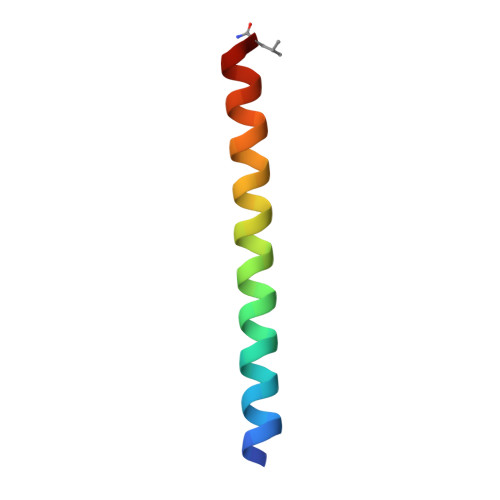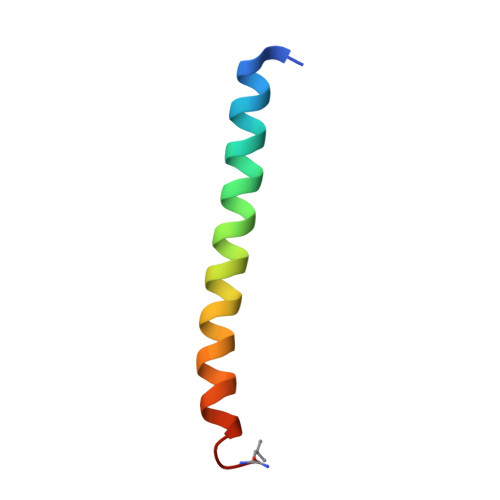Structural and biological mimicry of protein surface recognition by alpha/beta-peptide foldamers
Horne, W.S., Johnson, L.M., Ketas, T.J., Klasse, P.J., Lu, M., Moore, J.P., Gellman, S.H.(2009) Proc Natl Acad Sci U S A 106: 14751-14756
- PubMed: 19706443
- DOI: https://doi.org/10.1073/pnas.0902663106
- Primary Citation of Related Structures:
3F4Y, 3F4Z, 3F50, 3G7A - PubMed Abstract:
Unnatural oligomers that can mimic protein surfaces offer a potentially useful strategy for blocking biomedically important protein-protein interactions. Here we evaluate an approach based on combining alpha- and beta-amino acid residues in the context of a polypeptide sequence from the HIV protein gp41, which represents an excellent testbed because of the wealth of available structural and biological information. We show that alpha/beta-peptides can mimic structural and functional properties of a critical gp41 subunit. Physical studies in solution, crystallographic data, and results from cell-fusion and virus-infectivity assays collectively indicate that the gp41-mimetic alpha/beta-peptides effectively block HIV-cell fusion via a mechanism comparable to that of gp41-derived alpha-peptides. An optimized alpha/beta-peptide is far less susceptible to proteolytic degradation than is an analogous alpha-peptide. Our findings show how a two-stage design approach, in which sequence-based alpha-->beta replacements are followed by site-specific backbone rigidification, can lead to physical and biological mimicry of a natural biorecognition process.
Organizational Affiliation:
Department of Chemistry, University of Wisconsin, 1101 University Avenue, Madison, WI 53706, USA.















